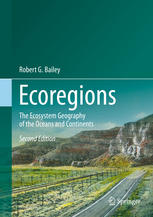

Most ebook files are in PDF format, so you can easily read them using various software such as Foxit Reader or directly on the Google Chrome browser.
Some ebook files are released by publishers in other formats such as .awz, .mobi, .epub, .fb2, etc. You may need to install specific software to read these formats on mobile/PC, such as Calibre.
Please read the tutorial at this link: https://ebookbell.com/faq
We offer FREE conversion to the popular formats you request; however, this may take some time. Therefore, right after payment, please email us, and we will try to provide the service as quickly as possible.
For some exceptional file formats or broken links (if any), please refrain from opening any disputes. Instead, email us first, and we will try to assist within a maximum of 6 hours.
EbookBell Team

5.0
88 reviewsGlobal warming and human-driven impacts are changing the World’s ecological zones. This book applies the principles described in Bailey’s Ecosystem Geography: From Ecoregions to Sites, 2nd ed. (Springer 2009, 1st ed. 1996) to describe and characterize the major terrestrial and aquatic ecological zones of the Earth. Bailey’s system for classifying these zones has been adopted by major organizations such as the U.S. Forest Service and The Nature Conservancy and this book is a significant contribution to a long tradition of classifying and studying the world’s ecological regions or ecoregions. It includes two color maps that show the major ecoregions of the continents and oceans. Also included are: - 106 illustrations with 55 in full color - A new chapter on mountains is included. - There are new sections that address concerns about how eco regions are changing under the relentless influence of humans and climate change - Another new feature is the discussion of using eco regional patterns to transfer research results and select sites for detecting climate change effects on ecosystem distribution - Use of ecoregional patterns to design monitoring networks and sustainable landscapes - Fire regimes in different regional ecosystems and their management implications.